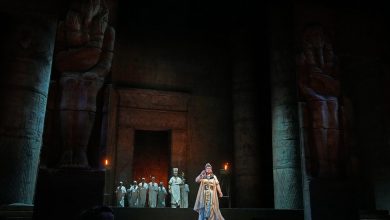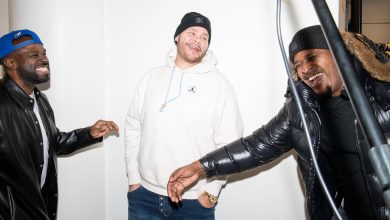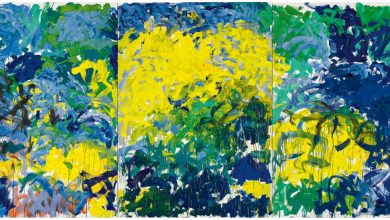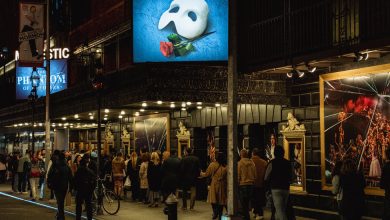Unfurling the Unusual Costumes of ‘Poor Things’
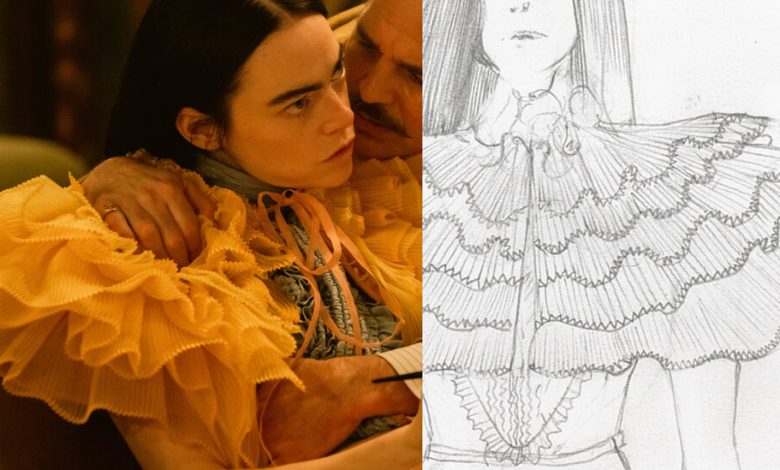
The designer Holly Waddington had wide latitude in envisioning the costumes for “Poor Things,” Yorgos Lanthimos’s mad comedy starring Emma Stone.
“The only brief really was that he didn’t want it to be overtly like a period drama” — the script is set in the 1880s — “and he didn’t want it to be overtly like a science fiction film,” Waddington said. In the movie (a Golden Lion winner at the Venice Film Festival and now an Oscar contender), Stone is a scientist’s creation who evolves from a childlike naïf to a sexually and politically liberated woman.
The Greek-born director Lanthimos, known for his surrealist vision, gave Waddington only one reference image: a young designer’s take on “inflatable trousers,” Waddington recalled. When puffed up, they “created this really exaggerated shape, just incredibly curvaceous.” She worked with other departments, like production design and hair and makeup, to finish the look for Stone’s Bella Baxter, whose life changes on a Grand Tour of cities like Lisbon.
A lot snapped into focus when Waddington learned that Bella would have long, jet-black hair; an Egon Schiele painting was Lanthimos’s inspiration for that, she said, and it informed her color palette. Another thing to consider, in a movie with a lot of sex scenes: How the clothes come off. “I had many slightly awkward conversations with Yorgos about it,” she said. “He was asking me, how does she have sex in these? I was probably a bit embarrassed. But he’s not, at all.”
Waddington knew her Victoriana; she spent years working in a costume house, specializing in archival ladies fashion. But for this film, she cut loose the corsetry — a scary prospect at first, she said, because corsets give period clothes their shape — and mixed eras and materials. Early on, Mrs. Prim, the medical assistant turned nanny, chooses Bella’s wardrobe; then she finds her own style. “The clothes needed to really change with her,” Waddington said.
Beyond that, Lanthimos offered conceptual freedom. “He just doesn’t need to have a whole back story,” she said. If it looked good, it flew. Bella’s statement sleeves are already having a moment.
In a video interview from her London home, Waddington discussed how, and why, she dressed Stone in three key moments of the movie. These are edited excerpts from the conversation.
1. Bella at Home
That look in the house is all based around the idea of her being a very young child at this point. And she’s being dressed by Mrs. Prim, who finds her really annoying. The clothes are not baby clothes, they’re womanly, but applied in this slightly ad hoc fashion, because she has the physicality of a child. Very quickly, things have dissembled and come off. And this is just based on my own observations of children that, even if you’re going to a smart occasion, the clothes, especially from the waist down, often come off. It’s just a slightly discordant, uncomfortable way to dress a woman — like an anxiety dream about going to a job interview wearing a suit at the top and nothing on the bottom, just knickers.
The knickers are almost like 1950s nappy covers and they’re highly textured — seersucker. And then there’s this big bodice, a very thick moiré taffeta. The thickness of the cloth is almost too thick for human scale, which is what you get when you look at dolls. Often their fabrics look like marzipan — like cake decoration. Also, the striations in the moiré look to me like the organic marks that you get in flesh.
She wears this funny little bustle — one of my favorite things in the film. It’s based on an authentic late Victorian bustle cage which would have been worn underneath the dress to give it volume. What struck me is that it looked super sci-fi.
2. Lisbon Outfit
During the pandemic, the producers arranged for me to go and meet Emma. I took many different renditions of sleeves with me — big sleeves, medium sized. I took lots of different kinds of knickers. I had an idea about how I wanted it to progress, but it was really in that fitting, trying all these shapes on Emma, that I was able to say, OK, we definitely need a bustle, we need these special 1930s tap pants, which I had just thrown in the suitcase at the last minute. They were a departure from the babyish knickers. In Lisbon, they’re silky and fluid — they’ve grown up and they’re sexy.
I knew that I wanted her to step out of the hotel in something really discordant. And I was thinking of that scene in “Taxi Driver” when Jodie Foster steps out into the streets of New York in these hot pants.
The ruffly top is based on a modesty piece for Victorian dresses — they filled in the décolletage, but on their own they’re just like a little dickey or bib. And I like the idea that she would just wear that, in its own right, as a blouse. What she’s actually wearing is bits of underwear as her clothes.
The boots are a little homage to André Courrèges. In early development, I looked at late ’60s-early ’70s sci-fi costumes, and space age modernism fashion. So those boots are based on this idea of her having her toes free, because she’s just uncontainable — she’s exposing every aspect of her, including her feet. The peep-toe boot would never have happened in Victorian society. They didn’t even show their ankles.
The gold, yellow and sky-blue colors are definitely a combination that we associate with many fairy tale characters. She stepped into the world and it opened up to her, sort of a Disney version of how you imagine Lisbon, all pastel. I wanted the clothes to reflect that joy and optimism.
3. Wedding Dress
I liked the idea of it being a cage, with bands of tubing in delicate silk. So hopefully evoking this sense of entrapment, but you could still see through to her and see her body — that felt important. And also these sleeves.
We had this book of patterns from the 1890s, my assistant got it from an antiques dealer on Portobello Market. Patterns from the actual period are much more extreme than how we imagined them. This is a very brief period in fashion when there were huge mutton sleeves. I thought they should be even larger — really massive. And Yorgos was really up for the big sleeves. The wedding dress sleeve is probably about a meter all the way around. They look like balloons.
I struggled with the veil because I didn’t feel like it was quite the right thing for this character. But then I took it to Emma on the morning of the shoot, and she grabbed it and got it wrapped around her face in a knot.
I quite like the fact that it’s see-through and light and big, and it’s also her favorite costume, because her body felt so free in it.

